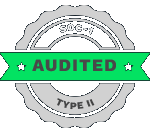Data visualization has gained momentum in almost every field except finance. It is only ironic that the department that deals with data and numbers all day doesn't feel the need to visually represent them. That is all set to change. In a world run by insightful pictograms and bar charts, financial institutions can't afford to drag their feet in tedious & unattractive balance sheets and P&L (Profit and Loss) statements. This realization, however late, has begun to sink in the industry. CFOS, CIOs, and decision-makers in BFSI now understand that data visualization in finance is a must-have for their enterprises.
Let's discuss how financial data visualization can help organizations weave impactful stories around data and make better business decisions.
Table of Contents:
Why Financial Data Visualization Matters?
Finance teams have oodles of data and information. What they do with this data can make or break the organization's prospects. Why? This goldmine of information can be visually represented and analyzed to better track and forecast organizational performance. Or it can lie there and go to waste.
A recent report by the American Institute of CPAs points to the fact that top-performing finance leaders tend to visualize data more than their peers. In other words, if you are not on the visualization bandwagon, you are not among the top players.
Today, when finance roles have evolved from a "bookkeeping and expense-control-accounting center" to an "analytical powerhouse that creates business value," finance managers have understood the significance of the data deluge that we are seeing.
Since 65 percent of people are visual learners, it clearly helps when big data is visualized. Not only does it improve the understanding of other teams about financial data, it also leads to them making better business decisions.
Recommended Reading:
How to Visualize Financial Data?
Different types of data analytics can help provide valuable insights and make informed decisions. Here are some common ways to visualize financial data;
Line Charts
Line charts display trends over time. This can be used for stock prices, revenue, or expenses. Each data point is connected with a line, making it easy to see the overall direction.
Pie Charts
Pie charts are useful for showing the composition of a whole, like the breakdown of expenses in a budget or the portfolio distribution by asset class.
Bar Charts
One of the most well-known visual representations, the bar charts, is effective for comparing different financial metrics, like the performances of multiple companies or products. Vertical or horizontal bars represent the data.
Scatter Plots
Scatter plots show the relationship between two variables, such as the one between interest rates and bond prices.
Histograms
Histograms are useful for understanding data distribution on data visualization in finance, such as the company's financial performance using financial ratios.
Heatmaps
Heatmaps display data using color gradients, making it easy to spot patterns. They can be used for visualizing correlations in a portfolio or risk analysis.
Engineer Data Brilliance with Visualization & Analytics: Transform Opportunities Now!
Contact us for Data Analytics & VisualizationDoing Financial Data Visualization Right
The key is getting an expert's guide to financial data analytics and visualization to do it appropriately. When done right, it makes complicated financial concepts easier to understand. However, data visualization can confuse and misrepresent your data when done poorly. Finance leaders should keep the following points in mind if they want to make the most out of their data;
Choose the Right Technology
Investing in the right data visualization tools is very important. Today, a number of technologies are available that can give compelling visualizations. However, first, you need to create a single source of data and eliminate data silos using a suitable ERP. Then, look for features that help you automatically visualize data by dragging and dropping assets. Try to make it as simple as possible so anyone on your finance team can create visuals.
Know Why You Are Creating Visuals
Before you move ahead with the visualization, you must ensure what is your purpose for doing it. It could be either declarative or exploratory.
For example, if you want to show the previous quarter's revenue, you have a declarative purpose. If you wonder whether your revenue aligns with your social media spend, then your purpose is exploratory. Identifying your purpose helps you establish the tools and format you need.
Do it According to Your Audience
'Who are you doing it for?' is very important. Keeping information relevant and to the point is crucial if you are doing it for "C-Suite" executives. However, if it is the mid-level managers that you are catering to, then it would require fewer details.
Keep on Refining the Team's Skills
Constantly learning and improving visualization skills is significant for your team. Try making them go through recent training and sessions. Also, do new hires and ensure they are well-versed with visual analytics.
Drive transformation with our coherent data visualization services
Get in touch nowThe 'Big' Picture
Visualizing financial data might not be a core technology but rather a method of amplifying the impact of technologies that drive reporting and analytics, but don't consider it of any less value. The ability to clarify and amplify data is crucial for both data-driven decisions and finance’s ability to provide more value to the organization.
If done right, storytelling with data can be the ultimate treasure trove of any organization. Finding that competitive edge wouldn't be that difficult if you follow the path leaders take. BluEnt, with its diverse and insightful industry experience, is well-poised to help you undertake your data visualization and analytics journey.
We've helped hundreds of clients gain maximum value out of their projects. If you are ready to elevate your enterprise's data visualization efforts, we are here for you! Get in touch with us.
Frequently Asked Questions
What is data visualization in finance?
Data visualization is the pictorial representation of complex financial statements and data into easy and insightful concepts. This is done using various tools and techniques, including charts, graphs, infographics, heat maps, etc.
What are the benefits of data visualization in finance?
Data Visualization in Finance offers the benefit of quick and easy communication of complex financial concepts. With the help of interactive charts, bar graphs, and other visualization tools, finance teams can turn complex financial data into simple concepts and easily communicate with stakeholders. This makes other departments comprehend the data and identify trends and patterns in it.




 Business Intelligence and Analytics: How one complements the other?
Business Intelligence and Analytics: How one complements the other?  Predictive Analytics in Finance; A Truly Transformative Idea
Predictive Analytics in Finance; A Truly Transformative Idea  Big Data Applications in Healthcare: An Overview
Big Data Applications in Healthcare: An Overview  What Skills Are Essential In MuleSoft Developers?
What Skills Are Essential In MuleSoft Developers? 
